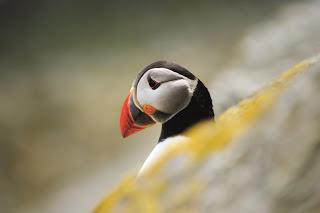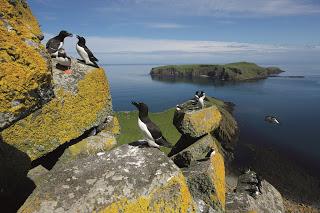
© Jim Richardson
The Shiant Isles have been officially declared rat-free, thanks to a four-year partnership project to restore them as a secure haven for nesting seabirds. A month-long intensive monitoring check in February found no sign of rats. This means that none has been recorded there for two years, the internationally agreed criterion for rat-free status.The EU LIFE+ funded Shiants seabird recovery project started in 2014 and is a partnership between the Nicolson family, custodians of the islands for three generations, Scottish Natural Heritage and RSPB Scotland. It has benefited from the help of many volunteers, and significant private donations.
Over the last four years, the project has focused on making the islands a safe place for seabirds to raise their chicks by removing the invasive, non-native black rats that were found there. It has been a huge success and played an important role in developing future island restoration and biosecurity work in the UK.
Another key part of the project is a programme of research monitoring the response of the ecosystem to the removal of rats. It is anticipated that seabirds such as puffins, razorbills, and guillemots will see improved breeding successes which could eventually support population increases in these long-lived seabirds breeding on the Shiants. It is hoped that Manx shearwaters and storm petrels will begin to nest on the islands as well.

© Jim Richardson
The Shiants, a remote cluster of islands five miles east of the Isle of Lewis and Harris in the Outer Hebrides, is one of the most important seabird breeding colonies in Europe, hosting around 100,000 pairs of nesting seabirds each year. However, there was evidence that the rats fed on the seabirds’ eggs and chicks, having a detrimental impact on their breeding success. With many seabird populations facing a multitude of threats and severe declines in Scotland and around the globe, it was vital that action was taken to safeguard those nesting on the Shiants.An operation to eradicate the rats was carried out over the winter of 2015/16, led by a New Zealand-based company Wildlife Management International Limited (WMIL), with the help of fifteen volunteers. This stage was incredibly challenging due to the rugged terrain and steep cliffs that make up the islands, and the Hebridean weather conditions including severe storms. Since then regular monitoring for signs of rats has been carried out with none recorded.
As well as the seabirds currently found on the islands, the Shiants offer suitable nesting habitat for European storm petrels and Manx shearwaters, two species of seabirds that are not generally found on islands with rats. Over the last two summers, the project has been working to encourage the storm petrels and Manx shearwaters to nest on the islands. The calling storm petrels, recorded on the islands last summer for the first time, gave a strong sign that the Shiants were free of rats ahead of this recent check.
In order to ensure that the islands remain free of rats, and other mammalian predators, visitors are being asked to follow simple biosecurity measures to help keep the islands rat-free. This includes checking boats and all kit for signs of rats prior to departing for the Shiants, and looking out for signs of them when on the islands. Local boat operators along with SNH and RSPB Scotland staff have been trained in biosecurity measures by the project.
Dr Charlie Main, Senior Project Manager for the Shiant Isles Recovery Project said: “This is an absolutely fantastic moment for the Shiant Isles and everyone involved in the project is delighted that they are now officially rat-free. With so many of Scotland’s seabird populations in decline, it’s vital that we do all we can to help them. Making these islands a secure place for them to breed is really important.
“Over the next few years, we’re really looking forward to seeing the full impact of the islands’ restoration flourish with the seabirds enjoying improved breeding successes, and other species beginning to breed there as well. We’ll also continue to work with the local community to ensure this special place remains free of rats. This project has paved the way for more island restorations to take place around Scotland and give our threatened seabirds the best possible chance for the future.”

© Jim Richardson
Andy Douse, Scottish Natural Heritage (SNH) ornithologist, said: “It’s wonderful news that this project has helped to protect the internationally important seabird colony on the Shiant Islands. The partnership between RSPB Scotland, WMIL, the Nicolson family and SNH has been a great success, particularly considering the complexity of the project, and we’d like to thank everyone involved. It was a great team effort, and we can now take the knowledge gained from this project into other work to protect Scotland’s special species and habitats.”Tom Nicolson said: “"Obviously this is a tremendous story of success on so many levels. When the idea was presented to us six years ago, the pure logistics of the project seemed hugely ambitious. Now, knowing that new species are beginning to thrive on the islands, so soon after the project has finished, there are no limits to what the Shiants could become over the next five, ten, twenty years.
“It has been an immense pleasure working with such a talented and dedicated group of people from the RSPB and Scottish Natural Heritage - everyone involved should be thoroughly proud of themselves.”

